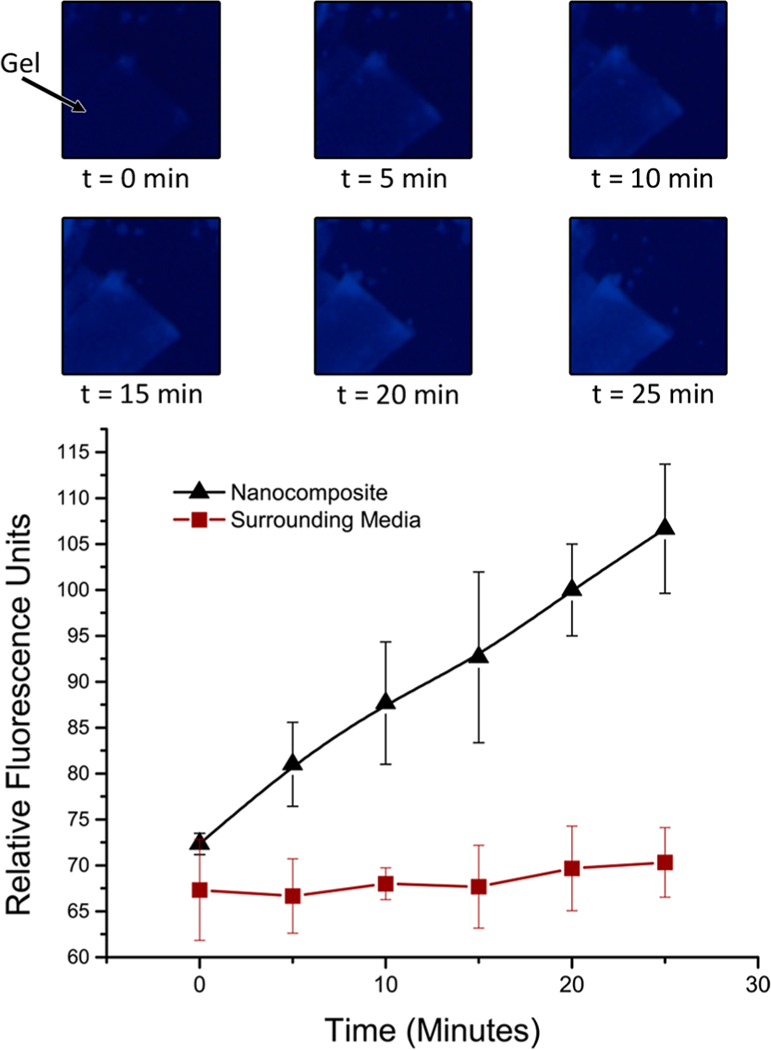Figure 5.

Exposure to fluorescamine during degradation by a 4000 nM chymotrypsin caused the hydrogel to fluoresce over time as the fluorescamine binds to generated N-terminal amines. The increase in fluorescence was linear, with no significant increase in the surrounding media, indicating the hydrogel was collapsing as opposed to eroding.
